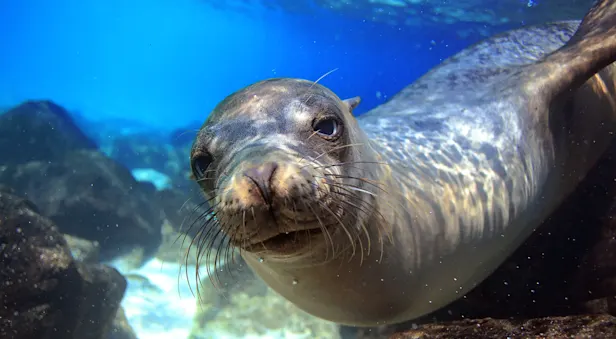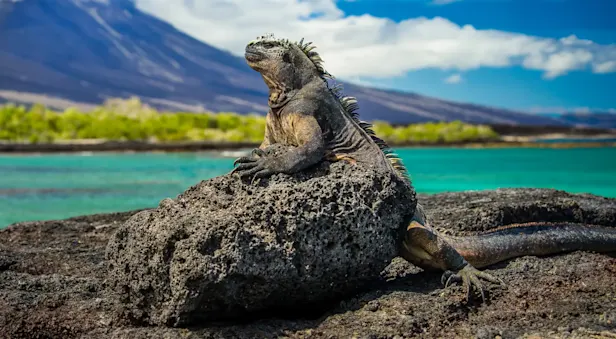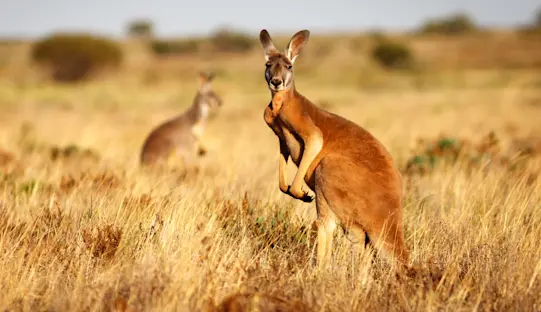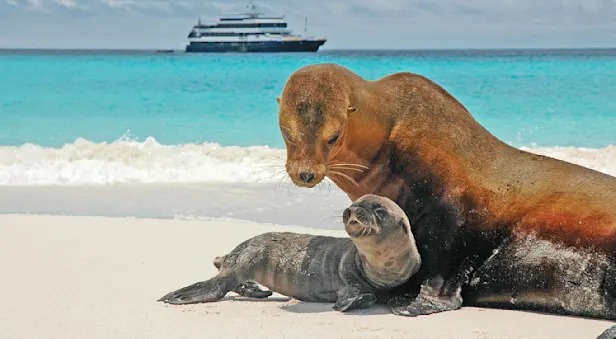
Know Before You Go


Blue-Footed Booby Facts | Galapagos Wildlife Guide
Blue-footed boobies are perhaps the most famous of the Galapagos birds and are often the first type of booby seen by visitors. Large colonies on Seymour and Hood islands are present throughout the year.
Physical Characteristics
Whitish-brown body
Dagger-shaped bill
Grows from 2.5 to 3 feet in length with a wingspan of 5 feet
Has large, bright blue feet and a matching bluish beak
Larger females have a slightly bigger pupil
Males whistle, while females honk
Range and Habitat
Blue-footed boobies occur along the western coasts of Central and South America, sometimes as far north as California and as far south as Peru. Half of all breeding pairs live in the Galapagos Islands. They come to land only to nest, preferably on lava rock.
Feeding Habits
Sometimes, blue-footed boobies join together in groups to search for food far out to sea. They eat sardines, anchovies and mackerel almost exclusively. When diving for food, they fold their wings around their aerodynamic bodies and dive into the sea from as high as 80 feet.
Breeding and Reproduction
When performing a courtship display, boobies pick up their feet and strut in a slow, dignified manner. They also bow, spread their wings and point their wings and neck toward the sky, with their necks, heads and bills stretched upward. These antics, along with mating and nesting occur year-round.
Females begin breeding between one to six years of age, while males begin between two and six years. Nesting consists of scraping the ground, literally, and laying a ring of guano around the perimeter. They nest at night in colonies and search for food during the day. The brood may consist of up three chicks. The adults both care for them and use their large feet to cover the chicks and keep them warm. Chicks are covered with a white, fluffy down coat that can make them appear larger than their parents. In a good year, all three of the young will survive; otherwise, the strongest one or two will outlive the weakest, which subsequently dies of starvation.
Conservation
The population of blue-footed boobies has dropped dramatically. In 2013 only 134 fledglings were counted. Twenty years prior, that number would have been in the thousands. The population has dropped by more than two-thirds since the 1960s. The reason for this decline is linked to the lowering number of sardines, which is closely related to rising temperatures of the ocean. Traditionally, temperatures rise only during El Niño years, but in recent years water temperatures have been warmer year round.
See Blue-Footed Boobies On These Galapagos Adventures

Galapagos Discovery: The Nat Hab Experience
Small-group adventures aboard your choice of private yachts, led by our outstanding naturalist guides and photography pros. Snorkel and swim with sea lions, sea turtles and penguins on this incomparable nature odyssey.


Galapagos by Catamaran: An Intimate Voyage
Experience the Galapagos aboard Lindblad Expeditions' most intimate vessel in its island fleet, a luxury motorsailing catamaran for just 16 guests.

































